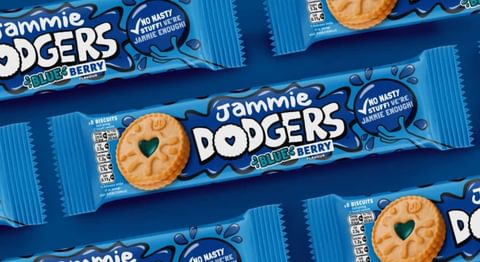NEWS ALERT - We won a SILVER IPM award for Best use of Social Media, 2025! Read more🏆

Brand identity is more than just the visual elements you see; it's the complete representation of a brand to the world. It encompasses not only visual and verbal aspects but also the stories and narratives the brand creates and that it lives every day. Like an individual's identity, which is shaped by their history, values, opinions, influences and ambitions, a brand’s identity is formed similarly, encompassing many components that extend beyond what it actively shows to its audience. An individual doesn’t tell their life story to everyone that they meet, and neither does a brand.
The iceberg analogy is often used - the bit of the brand you see that pokes over the waterline, but what lies beneath is as important and formative, even though less visible. But a brand's identity will be the key thing that resonates with your audience and allows them to trust you (81% of consumers need to trust a brand to consider buying) so ensuring your brand's identity is managed carefully and expressed clearly is crucial for success.
As we said above, a brand identity comprises multiple aspects that all work together to create an impression of the brand. It’s also important to understand that every moment and visible touchpoint, even the unguarded ones, are as instrumental as those that are curated in creating that impression of your brand. There is usually a wide team of people who will be working on different ways in which a brand presents itself, such as communications, marketing and sales, all of which contribute to an understanding of the brand so it is key that everyone is aligned on the components which help contribute to the identity and that nothing is left to chance. Everyone has to have the same understanding of the brand’s identity and a shared way of thinking about and expressing the bits of it that are visible to its audience:
The overall aesthetic and design elements used consistently across all brand assets create an overall sense of visual identity. The following factors (1-4) focus on how you interpret the brand from a visual perspective only. For a strong brand identity, these must match the following more behavioural aspects of the brand. The following factors also impact a brand's visual identity, together creating the overall identity.
A brand name and logo are the fundamental components of a brand identity. These are the first recognisable visual aspects of a brand. They are easily recognised, short-hand reminders of what the brand is and does and can be a symbol of or focus for trust.
However, the following design components will complement, enhance and ensure that the logo and brand name stand out and get noticed.
A selection of colours that are consistently used across all brand materials to evoke specific emotions and associations. The combination may be unique, or certainly differentiated from competitors in tone, texture or how they are used.
The style and appearance of the text used in the brand's communication materials. Some brands have bespoke typography, others use standard formats in novel ways, or interesting combinations to create a recognisable and distinctive look and feel.
The format and style of physical, material branding is another way brands express their identity, and an opportunity to demonstrate further what is different and special about the brand.
The tonality, style, and language used in the brand's communication are crucial aspects in conveying its personality and therefore its identity. How you speak to your audience, the sorts of words and phrases you use and how you express them will determine your audience’s relationship and thoughts about you. Words and voice help showcase who your brand is on a deeper level, beyond the visual elements.
A concise phrase that encapsulates the brand's essence or value proposition. It captures attention, enters the subconscious and becomes a shorthand key to unlocking a richer set of associations that your audience forms about your brand.
The design, functionality, and content of the brand's online platforms align with its identity. The website and digital presence will be where your audience interacts with your brand so it’s a key place for them to get an understanding of your brand's identity.
These components work together to create a cohesive visible brand identity that resonates with the target audience, communicates the brand's values, and distinguishes itself from competitors. The key thing is that you communicate your brand identity through these different aspects well enough that if the brand were to come to life you would know what they would be like.
Here are a couple of iconic brands that have a very strong and clear brand identity.
Founded in 1824, Cadbury has a rich history that spans nearly two centuries, growing from a small Birmingham shop to one of the world’s most beloved chocolate brands. Over time, Cadbury has carefully crafted not only its delicious products but also a strong, recognisable brand identity.
Cadbury is a prime example of a brand with a strong, clear, and consistent identity that resonates both online and in the real world. Its iconic purple packaging, smooth logo, and signature swirl are instantly recognisable. Alongside the brand’s warm, indulgent tone of voice, which reflects the comforting nature of its products. Whether in a TV ad, a social media post or visiting their factory, Cadbury’s identity remains cohesive. The brand has become so distinctive that even unbranded visuals or messages give a clear hint of its origin, allowing it to stand out and maintain a lasting impression in any setting.
When it comes to redecorating a home Dulux is the first brand many think of. The brand was founded over 100 years ago and has a history of innovation and commitment to creating beautiful, lasting finishes for those decorating their homes. The brand goes beyond just paint, Dulux has built a strong brand identity and become a trusted name in homes and businesses,
With a consistent visual identity, bold, bright colours and smooth finishes, Dulux conveys reliability and creativity. Its friendly tone of voice and relatable campaigns, both online and offline, further reinforce its position as a brand that stands for inspiration and transformation. You can often recognise a Dulux ad by its distinctive style, even without seeing the name, making it a brand that truly stands out in a crowded marketplace.

Brand identity is the heartbeat of any successful business, resonating deeply with both consumers and stakeholders alike. It goes beyond mere visuals, evoking the very soul of a brand and reminding people of the values it stands for, and the promises it makes.
Brand identity meaning comes to life through carefully designed elements like logos, colours, and tone. These pieces work together to create strong connections and build loyalty with customers. By understanding how brands like Nike and Lego use these elements, including every little detail like typography and packaging, we see that brand identity isn't just about being noticed - it's about being true to your brand at every touchpoint and in every experience.
-------
Sources:
Dulux Image: https://www.tvadsongs.uk/tag/d...